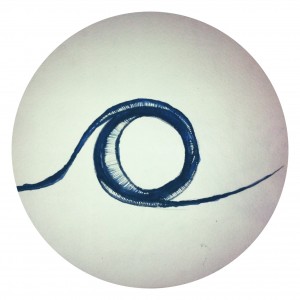“The paradoxes of life are all there in the sea. The ocean is often referred to as feminine, but the waves arrive in a masculine surge. As soon as they reach the full extent of their masculine expression, they shape themselves into a tube, a womb.”
– Ran Ortner in an interview in The Sun Magazine, June 2012
“In every language, then, the feminine ending was softer, more tender one might say, than that of the masculine.” (Proudhon via Bachelard 38)
water words that i know in portuguese:
wave – onda (f.)
sea – mar (m.)
ocean – oceano (m.)
crest – cume (m.)
tide – maré (f.)
flow – fluxo (m.)
moon – lua (f.)
sun – sol (m.)
wind – vento (m.)
Waves as words, the sea as androgyny.
Reverie on the word ‘ocean':
a word that sounds like the sea:
ooooooooooosssssshhhhnnnnn
beginning with the whole, the o, the circle the feminine, the complete beginning and end, where life begins, began. Womb, the primordial sea, the beginnings of thoughts from the salt sea of consciousness and unconsciousness—the sea is circular, all water swirling, beginning and ending in spirals, circles, waves finding their form in curves.
O
oh
ohhhh
ooo-followed by a shhhh
the shhhh of waves retreating, dragging fingers and grasping on to pebbles, the erotic ebb and flow of lovers, earth and sea grasping, retreating surging, eroding, caressing, lapping, raging, flowing.
Shhhh: started by the crest of C, the crest of wave rushing forward, compelled by wind to earth. “there is always violence at the shore”
the transition from shhh to the deep resonance of nnnnnnn: nnnnn the masculine rush, the crest, the rise upwards, a latent sexual drive, the momentum of water energy, surge, to begin again.
Oooooooooosssssshhhhhhhnnnnnnnnnnnn
Ocean as androgyny, the union of anima and animus.
The power and decisiveness of the animus in the dependence of the tides and the push of waves to change shorelines and to humble human spirits (we are small).
The lucidity and luminosity of anima in the reflectivity of sky on still water, light through water, in the circular forms of wave, vortex, spray. Gentle reminder to humans that though we are small, we are deep. And ancient. And fertile.
Wave as androgynous word:
push and peak of masculinity (violence, virility, strength)
curl and swirl of femininity (unity, compassion, flow)
ends as softer and more tender (but not without the history of the masculine surge)
Wave as orgasm, wave as creation:
The crest, peak, masculine surge to represent the hard work of contemplation, experimentation, observation, attention, patience, trial, immersion.
The tube, curve to represent unity of self and other, self and the world, the epiphany, empathy, distillation of the world into art, body and the distillation of self into the world.


